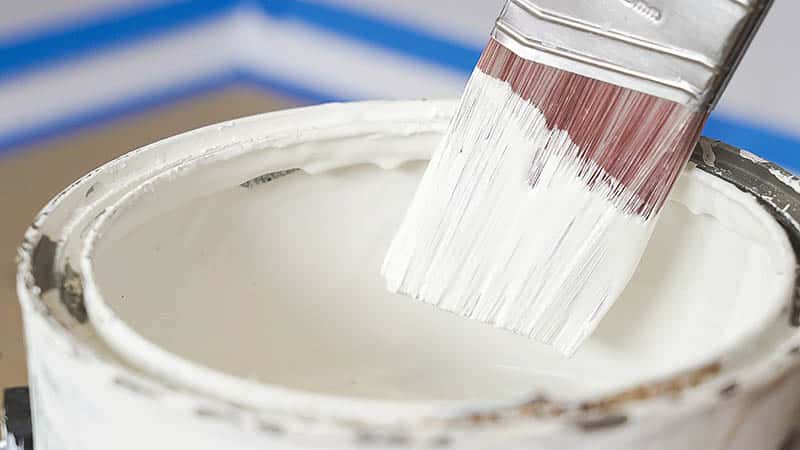Can You Change the Color of Tile Without Replacing It?
Here we discuss the question, can you change the color of tile without replacing It?
Tile like ceramic is a durable and long-lasting choice when it comes to flooring. That said, this can mean that once you choose a tile design, you want to stick with it. Plus, since they’re a more expensive option, you don’t want to replace them.
So, if you’re interested in a new look, can you change the color of your tile without replacing it?
How Can I Change the Color of My Tiles?
If you want to change the color of your ceramic tiles, there are a few ways to go about it. First, we’ll look at a basic step-by-step process.
Start off by cleaning your tiles thoroughly and then take the time to sand them. Sanding the tiles will help the pigment bond to it once you add it. You should also take a moment now to tape off your grout lines so that they aren’t dyed as well.
Before applying the paint, you’ll want to use a primer. There is a primer made specifically for ceramic that you can rely on for this. After that, you’ll want to apply your paint or epoxy resin and allow it to dry.
Once you’ve added all the coats you need, you can let the paint cure for a couple of days and add a finishing coat of polyurethane as a finish.
Using a Stencil to Paint Over the Floor Tile
The method we just looked at is useful, but the steps are aimed at painting whole tiles at once. In other words, it’s a great choice if you want a solid color floor.
On the other hand, if you want something a little more elaborate, you aren’t destined to struggle to paint by hand. Instead, it’s a good idea to try using a stencil.
The only difference in using these is that you’ll want to place the stencil where you want it to go before getting to work.
It’s a good idea to take the time to tape the stencil down for the best results. This way, it won’t shift while you work.
Video on how to paint tile floors with a stencil:
Can You Stain Tile a Different Color?
Yes! If you would prefer to stain your tiles instead of painting it, that’s definitely an option. These come in a variety of different colors and options but they are, by their nature, limited to making your tiles darker.
That being said, staining tile has a lot of benefits. For example, you can use different stains together to create a multi-colored appearance.
This can be particularly useful if you want to create an appearance similar to natural stone without replacing your tile. Yet, you can also use it for a variety of other aesthetic goals.
Can You Change the Color of Tile Without Removing It?
As we’ve mentioned, tiling floors is an investment of both your time and money. So, it makes sense that you probably don’t want to take on a project as large as removing or even completely replacing your tile flooring.
The good news is that you don’t have to remove your tile floors to change their colors. If you want to paint or stain your tile floors you don’t have to pull them up, although you will need to stay off of them long enough to allow the floor to completely dry and set.
Can You Change the Color of Ceramic Tiles?
Yes, you can change the color of your ceramic tiles. As we’ve covered, there are a few different ways that you can change the color of your tiles.
This means that you can experiment with a variety of different colors and tile patterns through mediums such as stains and paints.
As we’ve already mentioned, you can also take advantage of these methods without worrying about removing or replacing your tile. This can save you a lot of time, money, and effort in the long run compared to switching your ceramic tiles out.
How to Paint Ceramic Tile
Before you begin you’ll need to prep the area. Thoroughly clean the surface using a tile cleaner. Remove any excess dirt, soap scum or grease from the surface.
Then wipe the area clean with a wet towel or sponge. For stubborn stains use a plastic scour to remove the built-up materials.
Mold can be removed using a solution of 1 part bleach to 3 parts water. Apply the solution then clean the area with regular water.
Now that the area is clean and dry use masking tape to protect the areas you don’t want to paint. If you are painting backsplash or bathroom wall tile you’ll want to place down drop sheets to protect the flooring.
Fix cracked grout with new grout sealer before applying any paint as it will be more difficult to apply afterwards.
Lightly sand the area with 240 grit sandpaper. This helps with adhesion when painting. After sanding rinse the area with water once more and let the area dry completely.
Apply a tile primer to prepare the surface before applying paint. Types of primer with microban is formulated to protect against mold and mildew.
Use a roller tray to apply the primer to the tiles using a mini micro-fiber roller. Apply one coat while working on a few tiles at a time. Start with a zig-zag pattern then use the roller from top to bottom to get good coverage of primer. To ensure complete coverage of primer use a brush to get any missed spots.
Depending on the climate the primer will dry in about 2 to 4 hours. After it is completely dry apply a light sanding with 240 grit sandpaper. Wipe the surface using a cloth and you are now ready to apply the tile paint.
When applying you will need to use 2 coats of paint with a light sanding between coats. Use a roller tray to apply the paint and use a brush for any hard to reach spots. When applying the paint its better to use 2 thinner coats than 1 thick coat.
Apply the paint in a zig-zag formation and then use the paint roller from top to bottom while focusing on 1 small area at a time.
After about 6 hours your paint should be completely dry. Now give the coating a light sanding using 600 grit sandpaper. Remove any excess dust using a towel.
At this time you should apply a 2nd coat of paint. Continue using a zig-zag application finishing with a top to bottom motion with the paint roller to ensure a smoth finish.
It may take up to a week after painting for your coatings to completely cure. during this time avoid any deep cleaning to allow the surface to completely cure.
How to paint ceramic tile walls:
How to paint ceramic tile floors:
What Type of Paint Do You Use on Ceramic Tile Floors?
When you’re painting anything, it’s crucial to make sure that you have the right paint on hand. Otherwise, you risk the product not bonding to the surface properly or even damaging the material you’re painting.
This risk includes when you paint ceramic tile too. To avoid a paint job that does more harm than good, invest in options like enamel, latex, or acrylic latex paints.
Remember, these paints should only be applied after a primer is applied and fully dried. This way, the paint will bond to the surface properly.











